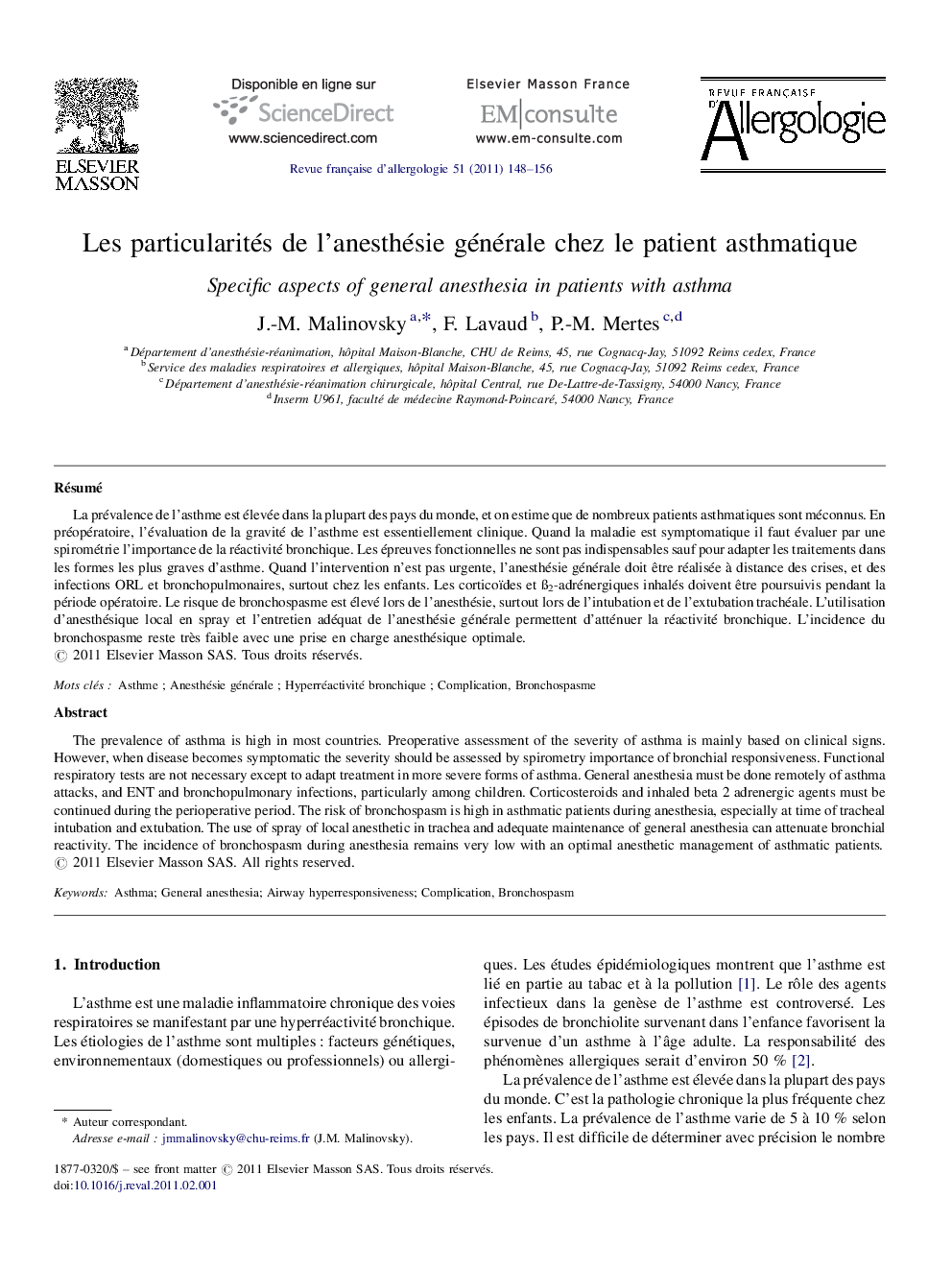| Article ID | Journal | Published Year | Pages | File Type |
|---|---|---|---|---|
| 3386241 | Revue Française d'Allergologie | 2011 | 9 Pages |
Abstract
The prevalence of asthma is high in most countries. Preoperative assessment of the severity of asthma is mainly based on clinical signs. However, when disease becomes symptomatic the severity should be assessed by spirometry importance of bronchial responsiveness. Functional respiratory tests are not necessary except to adapt treatment in more severe forms of asthma. General anesthesia must be done remotely of asthma attacks, and ENT and bronchopulmonary infections, particularly among children. Corticosteroids and inhaled beta 2 adrenergic agents must be continued during the perioperative period. The risk of bronchospasm is high in asthmatic patients during anesthesia, especially at time of tracheal intubation and extubation. The use of spray of local anesthetic in trachea and adequate maintenance of general anesthesia can attenuate bronchial reactivity. The incidence of bronchospasm during anesthesia remains very low with an optimal anesthetic management of asthmatic patients.
Keywords
Related Topics
Health Sciences
Medicine and Dentistry
Immunology, Allergology and Rheumatology
Authors
J.-M. Malinovsky, F. Lavaud, P.-M. Mertes,
